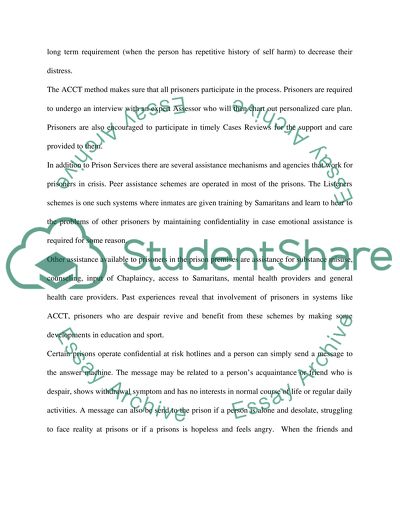Cite this document
(“Self harm problem in prisons. What initiatives have been implemented Essay”, n.d.)
Self harm problem in prisons. What initiatives have been implemented Essay. Retrieved from https://studentshare.org/miscellaneous/1549259-self-harm-problem-in-prisons-what-initiatives-have-been-implemented-by-the-prison-service-to-reduce-the-likelihood-of-self-harm
Self harm problem in prisons. What initiatives have been implemented Essay. Retrieved from https://studentshare.org/miscellaneous/1549259-self-harm-problem-in-prisons-what-initiatives-have-been-implemented-by-the-prison-service-to-reduce-the-likelihood-of-self-harm
(Self Harm Problem in Prisons. What Initiatives Have Been Implemented Essay)
Self Harm Problem in Prisons. What Initiatives Have Been Implemented Essay. https://studentshare.org/miscellaneous/1549259-self-harm-problem-in-prisons-what-initiatives-have-been-implemented-by-the-prison-service-to-reduce-the-likelihood-of-self-harm.
Self Harm Problem in Prisons. What Initiatives Have Been Implemented Essay. https://studentshare.org/miscellaneous/1549259-self-harm-problem-in-prisons-what-initiatives-have-been-implemented-by-the-prison-service-to-reduce-the-likelihood-of-self-harm.
“Self Harm Problem in Prisons. What Initiatives Have Been Implemented Essay”, n.d. https://studentshare.org/miscellaneous/1549259-self-harm-problem-in-prisons-what-initiatives-have-been-implemented-by-the-prison-service-to-reduce-the-likelihood-of-self-harm.


